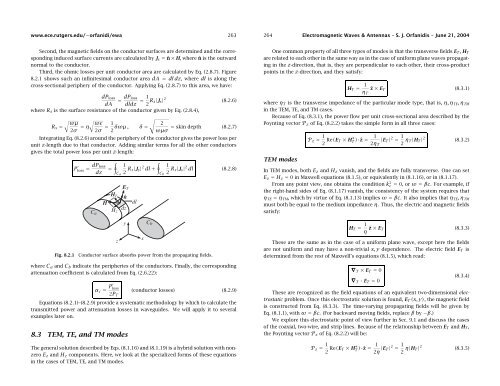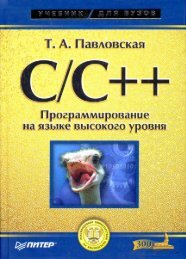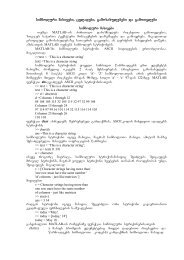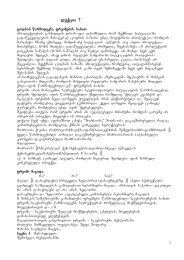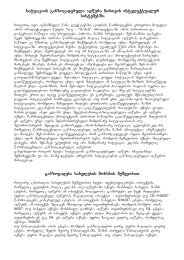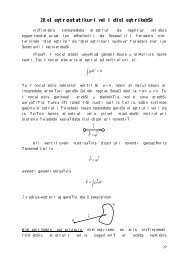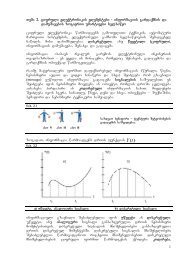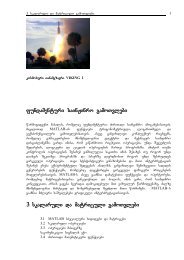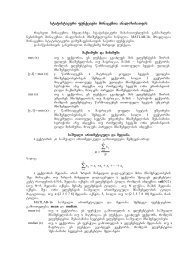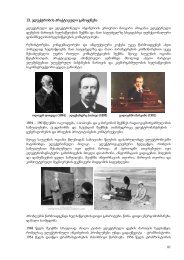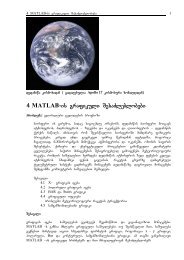Waveguides - ieeetsu
Waveguides - ieeetsu
Waveguides - ieeetsu
Create successful ePaper yourself
Turn your PDF publications into a flip-book with our unique Google optimized e-Paper software.
www.ece.rutgers.edu/∼orfanidi/ewa 263<br />
264 Electromagnetic Waves & Antennas – S. J. Orfanidis – June 21, 2004<br />
Second, the magnetic fields on the conductor surfaces are determined and the corresponding<br />
induced surface currents are calculated by J s = ˆn × H, where ˆn is the outward<br />
normal to the conductor.<br />
Third, the ohmic losses per unit conductor area are calculated by Eq. (2.8.7). Figure<br />
8.2.1 shows such an infinitesimal conductor area dA = dl dz, where dl is along the<br />
cross-sectional periphery of the conductor. Applying Eq. (2.8.7) to this area, we have:<br />
dP loss<br />
dA<br />
= dP loss<br />
dldz = 1 2 R s|J s | 2 (8.2.6)<br />
where R s is the surface resistance of the conductor given by Eq. (2.8.4),<br />
√ √ √<br />
ωµ ωɛ<br />
R s =<br />
2σ = η 2σ = 1 2 δωµ , δ = 2<br />
= skin depth (8.2.7)<br />
ωµσ<br />
Integrating Eq. (8.2.6) around the periphery of the conductor gives the power loss per<br />
unit z-length due to that conductor. Adding similar terms for all the other conductors<br />
gives the total power loss per unit z-length:<br />
P ′ loss = dP loss<br />
dz<br />
∮<br />
∮<br />
= 1<br />
C a 2 R s|J s | 2 1<br />
dl +<br />
C b 2 R s|J s | 2 dl (8.2.8)<br />
One common property of all three types of modes is that the transverse fields E T , H T<br />
are related to each other in the same way as in the case of uniform plane waves propagating<br />
in the z-direction, that is, they are perpendicular to each other, their cross-product<br />
points in the z-direction, and they satisfy:<br />
H T = 1<br />
η T<br />
ẑ × E T (8.3.1)<br />
where η T is the transverse impedance of the particular mode type, that is, η, η TE ,η TM<br />
in the TEM, TE, and TM cases.<br />
Because of Eq. (8.3.1), the power flow per unit cross-sectional area described by the<br />
Poynting vector P z of Eq. (8.2.2) takes the simple form in all three cases:<br />
TEM modes<br />
P z = 1 2 Re(E T × H ∗ T )·ẑ = 1<br />
2η T<br />
|E T | 2 = 1 2 η T|H T | 2 (8.3.2)<br />
In TEM modes, both E z and H z vanish, and the fields are fully transverse. One can set<br />
E z = H z = 0 in Maxwell equations (8.1.5), or equivalently in (8.1.16), or in (8.1.17).<br />
From any point view, one obtains the condition k 2 c = 0, or ω = βc. For example, if<br />
the right-hand sides of Eq. (8.1.17) vanish, the consistency of the system requires that<br />
η TE = η TM , which by virtue of Eq. (8.1.13) implies ω = βc. It also implies that η TE ,η TM<br />
must both be equal to the medium impedance η. Thus, the electric and magnetic fields<br />
satisfy:<br />
H T = 1 η ẑ × E T (8.3.3)<br />
Fig. 8.2.1<br />
Conductor surface absorbs power from the propagating fields.<br />
These are the same as in the case of a uniform plane wave, except here the fields<br />
are not uniform and may have a non-trivial x, y dependence. The electric field E T is<br />
determined from the rest of Maxwell’s equations (8.1.5), which read:<br />
where C a and C b indicate the peripheries of the conductors. Finally, the corresponding<br />
attenuation coefficient is calculated from Eq. (2.6.22):<br />
α c = P′ loss<br />
(conductor losses) (8.2.9)<br />
2P T<br />
Equations (8.2.1)–(8.2.9) provide a systematic methodology by which to calculate the<br />
transmitted power and attenuation losses in waveguides. We will apply it to several<br />
examples later on.<br />
8.3 TEM, TE, and TM modes<br />
The general solution described by Eqs. (8.1.16) and (8.1.19) is a hybrid solution with nonzero<br />
E z and H z components. Here, we look at the specialized forms of these equations<br />
in the cases of TEM, TE, and TM modes.<br />
∇ T × E T = 0<br />
∇ T · E T = 0<br />
(8.3.4)<br />
These are recognized as the field equations of an equivalent two-dimensional electrostatic<br />
problem. Once this electrostatic solution is found, E T (x, y), the magnetic field<br />
is constructed from Eq. (8.3.3). The time-varying propagating fields will be given by<br />
Eq. (8.1.1), with ω = βc. (For backward moving fields, replace β by −β.)<br />
We explore this electrostatic point of view further in Sec. 9.1 and discuss the cases<br />
of the coaxial, two-wire, and strip lines. Because of the relationship between E T and H T ,<br />
the Poynting vector P z of Eq. (8.2.2) will be:<br />
P z = 1 2 Re(E T × H ∗ T )·ẑ = 1<br />
2η |E T| 2 = 1 2 η|H T| 2 (8.3.5)


